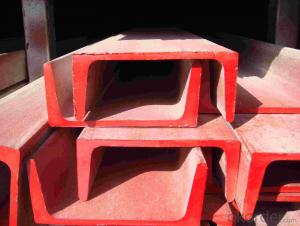When it comes to constructing buildings, bridges, and other infrastructure projects, steel rebar plays a crucial role. Known for its strength and durability, steel rebar is an essential component in reinforcing concrete structures. But with so many sizes and types available, choosing the right one for your project can be a daunting task. That’s why we’ve put together this comprehensive guide to help you navigate the world of steel rebar sizes for builders.
Understanding Steel Rebar
Before we dive into the different sizes, it’s important to understand what steel rebar is and why it’s used. Steel rebar, also known as rerod, rebar, or reinforcement steel, is a common term for ribbed steel bars that are used to reinforce concrete. The ribs on the bars help to bond the rebar to the concrete, providing additional strength and stability to the structure.
The Importance of Choosing the Right Size
Choosing the right size of steel rebar is critical to the success of your project. The size you choose will depend on several factors, including the type of structure you’re building, the load it will need to support, and the environmental conditions it will be exposed to. Using the wrong size can lead to structural failures, which can be costly and dangerous.
Common Steel Rebar Sizes
There are a variety of steel rebar sizes available, each with its own unique characteristics and applications. Here are some of the most common sizes you’ll encounter:
– 3 Rebar (9mm): This is the smallest size of rebar commonly used in construction. It’s often used for light residential projects and in areas where the concrete needs to be reinforced but the loads are relatively low.
– 4 Rebar (12mm): A step up from 3, this size is commonly used in residential and commercial projects. It’s suitable for medium loads and can be found in foundations, walls, and slabs.
– 5 Rebar (16mm): This size is used for more heavy-duty applications, such as large commercial buildings and bridges. It provides greater strength and is often used in columns and beams.
– 6 Rebar (19mm): As one of the larger sizes, 6 rebar is used for very heavy loads and critical structural elements. You’ll often find it in the foundations of tall buildings and in other high-stress areas.
Factors to Consider When Choosing a Size
When selecting a steel rebar size, there are several factors to consider:
– Load Requirements: The size of the rebar needed will depend on the load the structure needs to support. Heavier loads require larger rebar sizes.
– Spacing: The spacing between rebars is also important. Larger rebars require more space, which can affect the overall design and cost of the project.
– Cost: Larger rebar sizes are more expensive, so it’s important to balance the need for strength with budget constraints.
– Availability: Some sizes may be more readily available in your area, which can affect your decision.
– Local Building Codes: Always check with your local building codes to ensure the rebar size you choose meets the required standards.
How to Measure Steel Rebar
Measuring steel rebar can be a bit tricky, especially if you’re new to construction. Here’s a simple guide to help you measure rebar accurately:
1. Diameter: The diameter of the rebar is usually measured in millimeters (mm) or inches. Use a caliper or a micrometer to measure the diameter accurately.
2. Length: The length of the rebar is typically measured in feet or meters. Use a tape measure to ensure you have the correct length for your project.
3. Weight: The weight of the rebar is determined by its diameter and length. You can calculate the weight using the formula: Weight (kg) = 0.00888 Diameter (mm)² Length (m).
Cutting and Bending Steel Rebar
Cutting and bending steel rebar is an essential part of the construction process. Here are some tips to help you work with rebar effectively:
– Cutting: Use a hacksaw or an angle grinder with a metal cutting disc to cut rebar. Always wear safety goggles and gloves to protect yourself.
– Bending: Bending rebar can be done manually with a rebar bender or with a hydraulic press. Make sure to follow the manufacturer’s instructions for the specific tool you’re using.
Storage and Handling of Steel Rebar
Proper storage and handling of steel rebar are crucial to ensure its longevity and effectiveness. Here are some best practices to follow:
– Storage: Store rebar in a dry, covered area to protect it from moisture and corrosion.
– Handling: When handling rebar, use gloves to protect your hands from the sharp edges. Lift with your legs, not your back, to avoid injury.
– Safety: Always follow safety guidelines when working with rebar to prevent accidents and injuries.
Conclusion
In conclusion, understanding steel rebar sizes and how to choose the right one for your project is essential for any builder. By considering factors such as load requirements, spacing, cost, availability, and local building codes, you can ensure that your project is structurally sound and meets all necessary standards. Remember to measure, cut, bend, store, and handle rebar properly to ensure its effectiveness and safety on the job site. Happy building!

